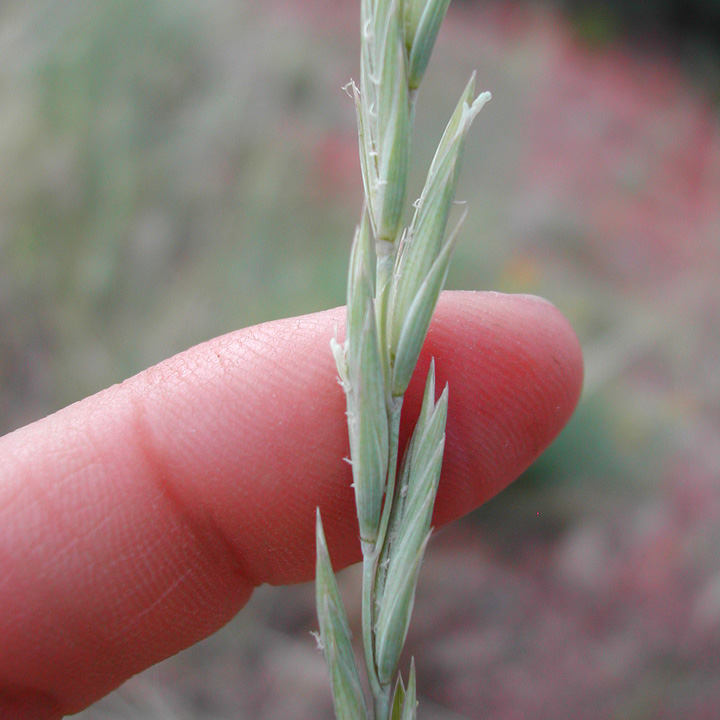|
Family: Poaceae |
Plants perennial; sometimes cespitose, with or without rhizomes, sometimes stoloniferous. Culms 8-180(220) cm, usually erect to ascending, sometimes strongly decumbent to prostrate, usually glabrous. Leaves usually evenly distributed, sometimes somewhat basally concentrated; sheaths open for most of their length; auricles often present; ligules membranous, truncate or rounded, sometimes acute, entire or erose, often ciliolate; blades 1-24(25) mm wide, abaxial surfaces usually smooth or scabrous, sometimes with hairs, adaxial surfaces scabrous or with hairs, particularly over the veins, usually with unequal, not strongly ribbed, widely spaced veins, sometimes with equal, strongly ribbed, closely spaced veins. Inflorescences spikes, usually exserted, with 1-3(5) spikelets per node, internodes (1.5)2-26 mm; rachises with scabridulous, scabrous, or ciliate edges. Spikelets usually appressed to ascending, sometimes strongly divergent or patent, with 1-11 florets, the distal florets often reduced, the lowest florets usually functional, sterile and glumelike in some species; disarticulation usually above the glumes and beneath each floret, sometimes also below the glumes or in the rachises. Glumes usually 2, absent or highly reduced in some species, usually equal to subequal, sometimes unequal, usually linear-lanceolate to linear, setaceous, or subulate, sometimes oblanceolate to obovate, (0)1-7-veined, sometimes keeled over 1 vein, not necessarily the central vein, the keel vein sometimes extended into an awn; lemmas linear-lanceolate, obscurely 5(7)-veined, apices acute, often awned, sometimes bidentate, teeth to 0.2 mm, sometimes with bristles, bristles to 10 mm, awns terminal or from the sinus, straight or arcuately divergent, not geniculate; paleas from shorter than to slightly longer than the lemmas, keels scabrous or ciliate, at least in part; anthers 3, 0.7-7 mm. Caryopses with hairy apices. x = 7. Haplomes St, H, Y, P. Name from the Greek elyo, -rolled up-, the caryopses being tightly embraced by the lemma and palea. Spikelets (1)2(-4) at each node of the spike, (1)2(-6)-fld, eventually disarticulating above (seldom below) the glumes and between the florets; glumes often narrow and awn-like, often displaced to form a false invol beneath the spikelets, seldom much reduced or even wanting; rachilla commonly twisted at base, bringing the florets into ±dorsiventral alignment with the axis; lemma long-awned or seldom awnless; self-pollinating perennial bunch-grasses with mostly flat lvs, short ligules, and small anthers, these mostly 1-3(-3.5) mm. (Hystrix, Sitanion) 75, N. Hemisphere. Gleason, Henry A. & Cronquist, Arthur J. 1991. Manual of vascular plants of northeastern United States and adjacent Canada. lxxv + 910 pp. ©The New York Botanical Garden. All rights reserved. Used by permission. |


